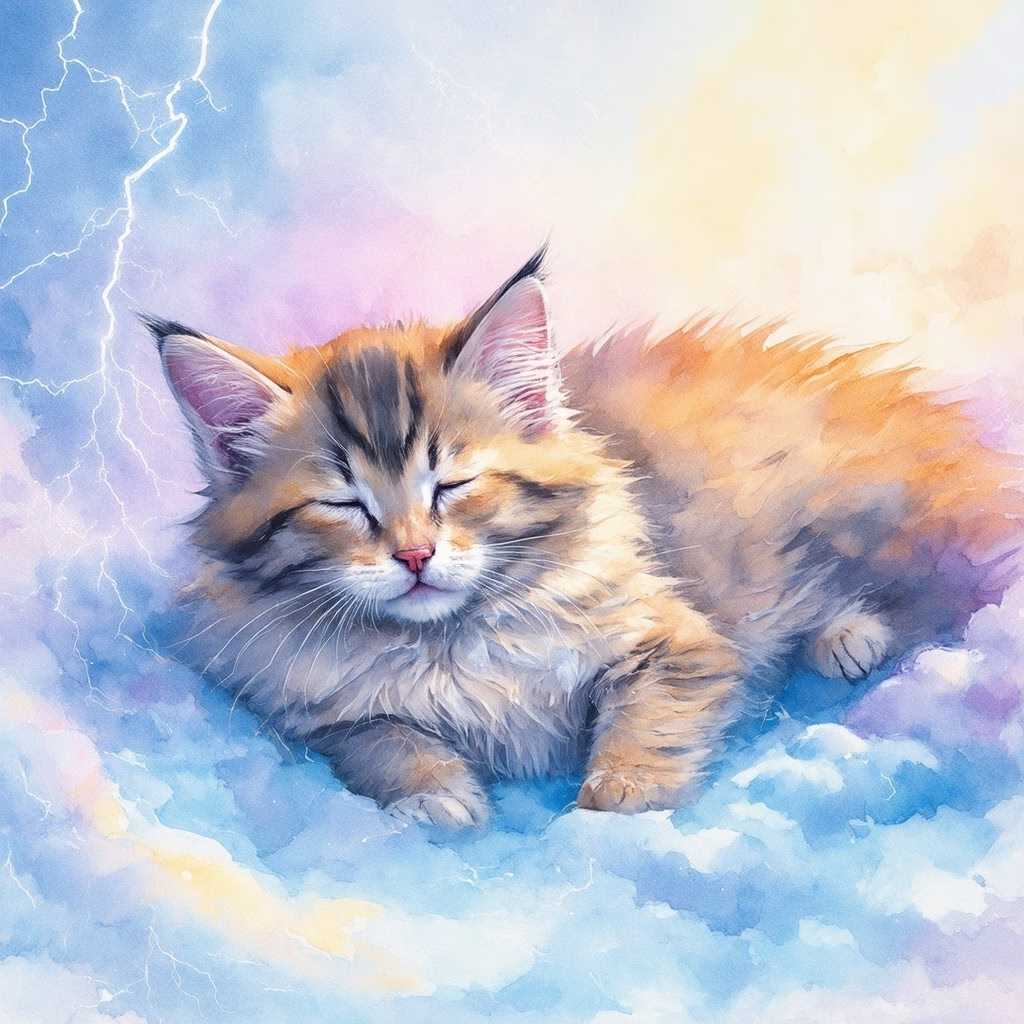Key Takeaways
- Recognizing kitten seizure symptoms early can lead to prompt veterinary care, improving outcomes for your pet.
- Common triggers for kitten seizures include genetic factors, infections, toxins, and metabolic disorders.
- Understanding the types of feline seizures—generalized, focal, and absence—helps in identifying the appropriate response.
- Immediate care during a seizure episode is critical; avoid touching your cat to prevent injury and allow them to recover in a safe space.
- Documenting your kitten’s seizure episodes and symptoms aids veterinarians in diagnosing potential underlying conditions, such as feline epilepsy.
Understanding kitten seizures is crucial for every cat owner, as these episodes can be alarming and confusing. In this article, we will explore the various aspects of kitten seizures, including how to recognize the symptoms and what triggers these distressing events. You will learn what a kitten seizure looks like, the common causes behind cat seizures, and the underlying conditions such as feline epilepsy. We will also discuss the immediate care needed during a seizure in a cat, as well as long-term management strategies and home remedies for cat seizures. Additionally, we will address the emotional challenges of caring for a cat with seizures, including when to consider difficult decisions like euthanasia. By the end of this article, you will have a comprehensive understanding of seizures in cats, empowering you to act swiftly and effectively should your feline friend experience a seizure episode.
Kitten seizure symptoms: Recognizing the Signs
Kittens can experience seizures, which may manifest in various ways. Understanding the signs and symptoms is crucial for timely intervention. Recognizing these kitten seizure symptoms can help you respond effectively and ensure your pet receives the necessary care.
Subtle Signs
- Head Twitches: Involuntary movements of the head.
- Jaw Chomping: Repetitive opening and closing of the mouth.
- Staring into Space: A blank expression or unresponsiveness.
More Pronounced Signs
- Loss of Consciousness: The kitten may fall to the ground and appear limp or stiff.
- Convulsions: Characterized by jerking or twitching movements, often accompanied by paddling of the legs.
Other symptoms may include excessive drooling, unusual vocalizations, and loss of bladder or bowel control. After a seizure, you might notice signs of disorientation, lethargy, or attention-seeking behavior. If you observe any of these symptoms in your kitten, it is essential to consult a veterinarian promptly for a thorough evaluation and appropriate care. Early intervention can significantly improve outcomes for kittens experiencing seizures.
Understanding feline seizures: Types and Characteristics
Feline seizures can be categorized into different types, each with unique characteristics. Understanding these types is vital for identifying the underlying causes and determining the best course of action.
What triggers absence seizures?
Absence seizures in kittens may be triggered by various factors, including stress, fever, or metabolic imbalances. These seizures often present as brief episodes where the kitten appears to be staring blankly or unresponsive. Identifying these triggers can help in managing and preventing future seizures.
Kitten seizure causes: Common Triggers
Common triggers for kitten seizures include:
- Genetic Factors: Some breeds are more prone to seizures due to hereditary conditions.
- Infections: Viral or bacterial infections affecting the brain can lead to seizures.
- Exposure to Toxins: Ingesting harmful substances can trigger seizures in kittens.
- Metabolic Disorders: Conditions such as hypoglycemia or liver disease can also cause seizures.
Understanding these kitten seizure causes is crucial for pet owners to take preventive measures and seek veterinary assistance when necessary.

What does a kitten seizure look like?
Recognizing the signs of a kitten seizure is crucial for timely intervention and care. Kitten seizure symptoms can vary, but common indicators include:
- Uncontrollable shaking or twitching: This is often the most noticeable sign, where the kitten may appear to convulse.
- Stiffening of the body: The kitten may exhibit rigidity, making it difficult for them to move.
- Loss of consciousness: During a seizure, a kitten may not respond to stimuli and appear unresponsive.
- Drooling or foaming at the mouth: Excessive salivation can occur during a seizure episode.
- Involuntary urination or defecation: Some kittens may lose control of their bladder or bowels during a seizure.
Understanding these symptoms is vital for pet owners to ensure their kitten receives appropriate care. If you observe these signs, it’s essential to consult a veterinarian immediately.
Kitten seizure causes: Common Triggers
Various factors can trigger seizures in kittens, and identifying these causes is key to managing their health. Here are some common triggers:
- Genetic predisposition: Certain breeds may be more susceptible to feline epilepsy, which can lead to seizures.
- Infections: Viral or bacterial infections affecting the brain can result in seizures in kittens.
- Metabolic disorders: Conditions such as hypoglycemia or liver disease can provoke seizure activity.
- Exposure to toxins: Ingesting harmful substances, including certain plants or chemicals, can lead to seizures.
- Head trauma: Injuries sustained during play or accidents can trigger seizures.
For more detailed information on kitten seizure causes, visit this page.
Feline epilepsy: Understanding the Underlying Conditions
Feline epilepsy is a neurological disorder that can lead to recurrent seizures in cats. Understanding this condition is essential for effective management:
- Types of epilepsy: There are primary (idiopathic) and secondary epilepsy. Primary epilepsy has no identifiable cause, while secondary epilepsy results from underlying health issues.
- Diagnosis: A veterinarian may perform blood tests, imaging, and neurological exams to diagnose feline epilepsy accurately.
- Treatment options: Medications such as phenobarbital or potassium bromide are commonly prescribed to manage seizures in cats.
For more insights on feline seizures, check out this resource.
Understanding Feline Seizures: Types and Characteristics
Feline seizures can manifest in various forms, each with distinct characteristics. Understanding these types is crucial for pet owners to identify and respond appropriately to a kitten seizure. The most common types of seizures in cats include:
- Generalized Seizures: These affect the entire brain and result in a loss of consciousness. Symptoms may include muscle rigidity, twitching, and uncontrolled movements.
- Focal Seizures: These originate in one specific area of the brain. Symptoms may vary, including twitching of a single limb or facial twitching, but the cat remains conscious.
- Absence Seizures: These are characterized by brief lapses in awareness. A cat may seem to stare blankly for a few seconds, which can be mistaken for daydreaming.
Recognizing these types of seizures is essential for understanding the underlying causes and determining the best course of action. For more detailed insights, consider watching a kitten seizure video that illustrates these symptoms in action.
Kitten Seizure Causes: Common Triggers
Several factors can trigger seizures in cats, and identifying these is vital for effective management. Common causes include:
- Epilepsy: This is one of the most common causes of seizures in cats, often hereditary.
- Metabolic Disorders: Conditions such as hypoglycemia or liver disease can lead to seizures.
- Toxins: Ingesting harmful substances, including certain plants or chemicals, can provoke a seizure.
- Brain Tumors: These can disrupt normal brain function and lead to seizures.
If your kitten experiences a seizure, it is important to assess the situation carefully. Seizures in cats can be alarming, but if the seizure lasts no longer than 3–5 minutes and your cat recovers quickly, it is generally not a cause for immediate panic. However, it is crucial to contact your veterinarian as soon as possible, especially if this is your cat’s first seizure or if your cat is under 12 months of age.
For further information on kitten seizure causes and symptoms, consult reliable resources such as the ASPCA and American Veterinary Medical Association.
What triggers absence seizures?
Understanding the triggers of absence seizures in kittens is crucial for effective management. These seizures can manifest suddenly and may be linked to various underlying conditions. Common triggers include:
- Genetic Factors: Some kittens may inherit a predisposition to seizures, particularly if there is a family history of feline epilepsy.
- Infections: Viral or bacterial infections can lead to neurological issues, resulting in seizures. Conditions like feline panleukopenia or toxoplasmosis are notable examples.
- Metabolic Disorders: Imbalances in electrolytes or blood sugar levels can trigger seizures. Conditions such as hypoglycemia are particularly concerning in young kittens.
- Toxin Exposure: Ingestion of toxic substances, including certain plants or chemicals, can lead to seizures in cats.
Recognizing these triggers can help in preventing future episodes and ensuring the well-being of your kitten. For more information on kitten seizure causes and symptoms, consult your veterinarian.
Kitten seizure causes: Common Triggers
Identifying the specific causes of seizures in kittens is essential for effective treatment. Here are some common triggers:
- Infections: As mentioned, infections can significantly impact a kitten’s neurological health. Regular veterinary check-ups can help detect and treat these issues early.
- Genetic Predisposition: Some breeds are more prone to seizures. Understanding your kitten’s breed can provide insights into potential risks.
- Environmental Factors: Stressful environments or sudden changes in routine can trigger seizures. Maintaining a stable home environment is beneficial.
For a deeper understanding of cat seizures and their management, consider consulting with a veterinary professional.

Why shouldn’t you touch a cat having a seizure?
When a cat experiences a seizure, it is crucial to refrain from touching them for several reasons:
- Risk of Injury: During a seizure, a cat may thrash uncontrollably, which can lead to accidental bites or scratches. Cats may not recognize their surroundings or the people near them, and their instinctive reactions can be unpredictable. According to the American Veterinary Medical Association (AVMA), handling a seizing animal can result in serious injuries to both the pet and the person attempting to help.
- Safety of the Cat: Touching a cat during a seizure can also exacerbate their distress. Seizures can cause disorientation and fear, and physical contact may lead to further agitation. The best course of action is to ensure the cat is in a safe environment, away from sharp objects or hazards that could cause injury during the seizure.
- Duration of the Seizure: If a seizure lasts longer than five minutes, it is considered a medical emergency. In such cases, it is essential to seek veterinary care immediately. The ASPCA recommends monitoring the duration of the seizure and noting any unusual behaviors for your veterinarian, which can aid in diagnosis and treatment.
- Postictal Phase: After a seizure, cats often enter a postictal phase where they may be confused or disoriented. During this time, they may not respond well to touch or interaction. Allowing the cat to recover in a quiet, comfortable space is vital for their well-being.
In summary, it is best to keep a safe distance and provide a calm environment for a seizing cat. If seizures are frequent, consulting a veterinarian for a comprehensive evaluation and potential treatment options is highly recommended. For more information on cat health and seizures, refer to resources from the AVMA and the ASPCA.
Understanding cat seizures video: Visual Learning for Pet Owners
Visual aids can be incredibly helpful for pet owners trying to understand the complexities of cat seizures. Watching a kitten seizure video or a seizures in cats video can provide insight into what a seizure looks like and how to react appropriately. These videos often demonstrate the signs of a seizure in a cat, including muscle spasms, loss of consciousness, and postictal confusion. Understanding these symptoms can help you respond effectively in an emergency.
Additionally, educational videos can clarify the differences between seizures in cats symptoms and other conditions that may mimic seizures. This knowledge is crucial for pet owners to differentiate between a true seizure and other health issues, such as fainting or sudden death in kittens. By familiarizing yourself with these visual cues, you can be better prepared to assist your feline friend during a crisis.
What can be mistaken for a seizure in cats?
Several conditions can be mistaken for seizures in cats, leading to confusion for pet owners. Understanding these conditions is crucial for accurate diagnosis and treatment. Here are some common issues that can mimic seizures:
- Tremors: These involuntary muscle contractions can occur due to various reasons, including anxiety, pain, or neurological disorders. Tremors may appear similar to seizures but typically do not involve loss of consciousness.
- Syncope: Also known as fainting, syncope can result from a sudden drop in blood flow to the brain. Symptoms may include temporary loss of consciousness and muscle tone, which can be mistaken for a seizure.
- Narcolepsy: This sleep disorder causes sudden bouts of sleep and can lead to episodes that resemble seizures. Affected cats may suddenly fall asleep and exhibit muscle weakness.
- Vertigo: This condition, often caused by inner ear issues, can lead to disorientation and loss of balance. Cats may appear to have seizures as they stumble or fall over.
- Painful Muscle Spasms: Conditions such as fibromyalgia or injury can cause muscle spasms that may look like seizures. These spasms are often localized and can be triggered by movement or touch.
- Behavioral Issues: Certain behavioral disorders, such as feline hyperesthesia syndrome, can cause episodes of agitation or twitching that may be misinterpreted as seizures.
For accurate diagnosis, it is essential to consult a veterinarian who can perform a thorough examination and possibly conduct diagnostic tests. Understanding these conditions can help pet owners respond appropriately and seek timely medical intervention. For more information on pet health and wellness, resources like the American Veterinary Medical Association (AVMA) provide valuable insights.
Seizures in cats symptoms: Differentiating Between Conditions
Recognizing the symptoms of seizures in cats is vital for effective treatment. Common cat seizure symptoms include:
- Loss of consciousness or awareness
- Uncontrollable muscle twitching or jerking
- Stiffening of the body
- Involuntary urination or defecation
- Postictal phase: disorientation or confusion after the seizure
It’s important to document these symptoms and any potential triggers to provide your veterinarian with comprehensive information. This can aid in diagnosing conditions such as kitten seizure causes or feline epilepsy. Understanding the differences between seizures and other conditions can lead to better management and care for your pet.
What can be mistaken for a seizure in cats?
Understanding the symptoms of seizures in cats is crucial for pet owners. However, several conditions can mimic a seizure in a cat, leading to confusion. Here are some common conditions that can be mistaken for feline seizures:
- Fainting (Syncope): This occurs when a cat loses consciousness temporarily due to a lack of blood flow to the brain. Symptoms may include sudden collapse and a brief period of unresponsiveness.
- Vestibular Disease: This condition affects a cat’s balance and can cause symptoms like head tilting, falling, and disorientation, which may resemble seizure activity.
- Behavioral Issues: Certain behavioral problems, such as extreme playfulness or aggression, can sometimes be mistaken for seizures, especially if they involve sudden movements.
- Muscle Spasms: Involuntary muscle contractions can occur due to various reasons, including pain or neurological disorders, and may look similar to a seizure.
To accurately differentiate between these conditions and actual cat seizures, it is essential to observe the duration and characteristics of the episode. For a comprehensive understanding, consider watching a kitten seizure video or seizures in cats video for visual reference.
Seizures in cats symptoms: Differentiating Between Conditions
Recognizing the specific symptoms of seizures in cats can help in distinguishing them from other health issues. Here are key symptoms to look for:
- Convulsions: Involuntary shaking or jerking movements of the body.
- Loss of Consciousness: The cat may appear unresponsive or unaware of its surroundings.
- Postictal Phase: After a seizure, cats may exhibit confusion, disorientation, or temporary blindness.
- Excessive Salivation: Increased drooling can occur during or after a seizure.
If you suspect your cat is experiencing seizures, it is vital to consult a veterinarian for a proper diagnosis and treatment plan. Understanding these symptoms can also help in addressing concerns about kitten seizure causes and potential long-term implications, such as feline epilepsy.













